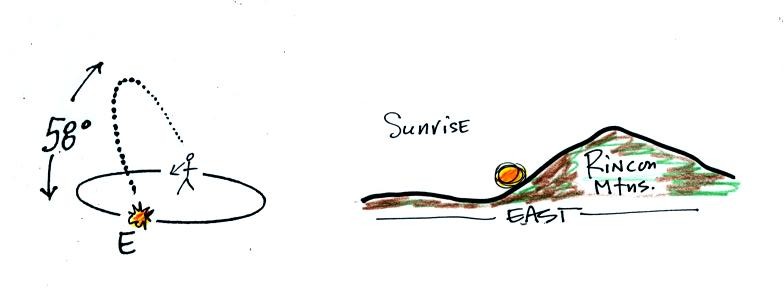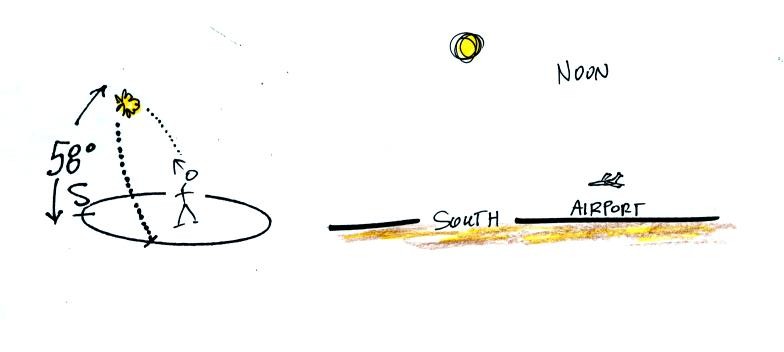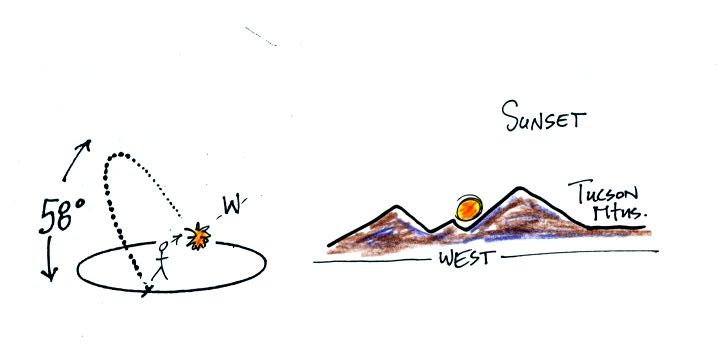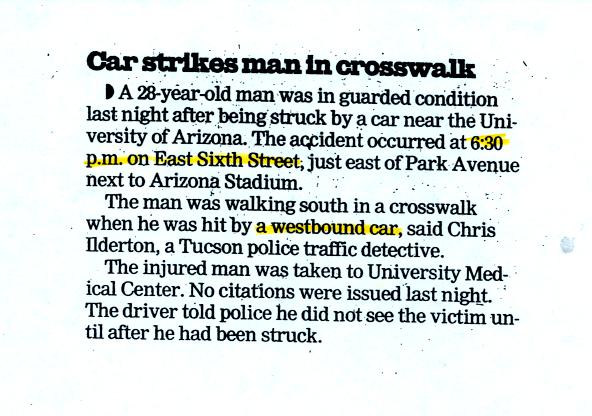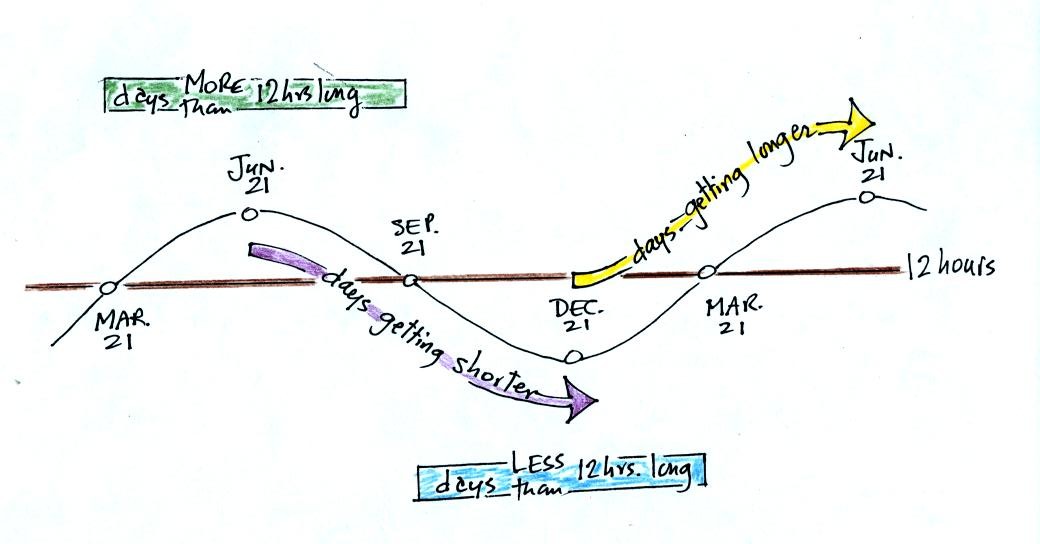On
the equinoxes, the sun rises in the east and sets
in the
west. This next picture shows the position of the sun at sunrise
(around 6:30 am on the equinoxes in Tucson
At noon you need to look about 60 degrees above the southern
horizon to see the sun
The sun sets exactly in the west at around 6:30 pm on the
equinoxes in Tucson
This is the 2 pm class
you are more likely to see the sun set (perhaps) than see the sun
rise. The figure below shows you about what you would see if you
looked west on Speedway (from Treat Ave.) at sunset. In the
winter the sun will set south of west, in the summer north of west
(probably further south and north than shown here). On the
equinoxes the sun sets exactly in the west.
If you aren't careful, you can get yourself seriously injured or
killed
on
the equinoxes
This article appeared in the Arizona Daily Star on or around
the fall equinox. The driver was looking straight at the setting sun
If his windshield was as dirty as the one on my car, he wouldn't have
been able to see the pedestrian. I have a yellow 1980 Toyota Celica
with a very dirty windshield. If you see that car driving
west on an east-west oriented street around sunset, LOOK OUT!
The days and nights are each 12 hours long on the equinoxes.
June 21st, the summer solstice, is
the longest day of the year (about 14 hours in Tucson). Days
start getting shorter the day after the summer solstice. On Sep.
21 (give or take a day or two) the days are 12 hours long. They
continue getting shorter until Dec. 21, the winter solstice and the
shortest day of the year (about 10 hours in Tucson). Then days
start getting longer again.
